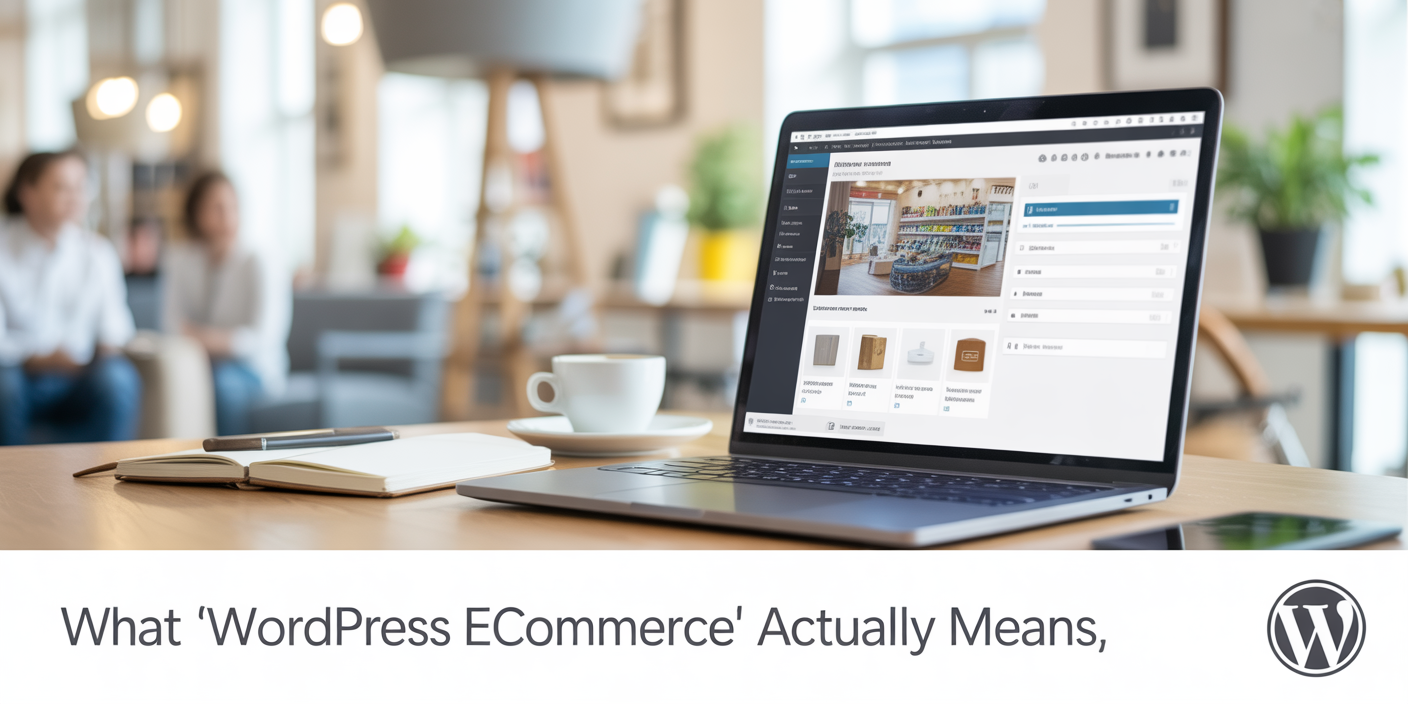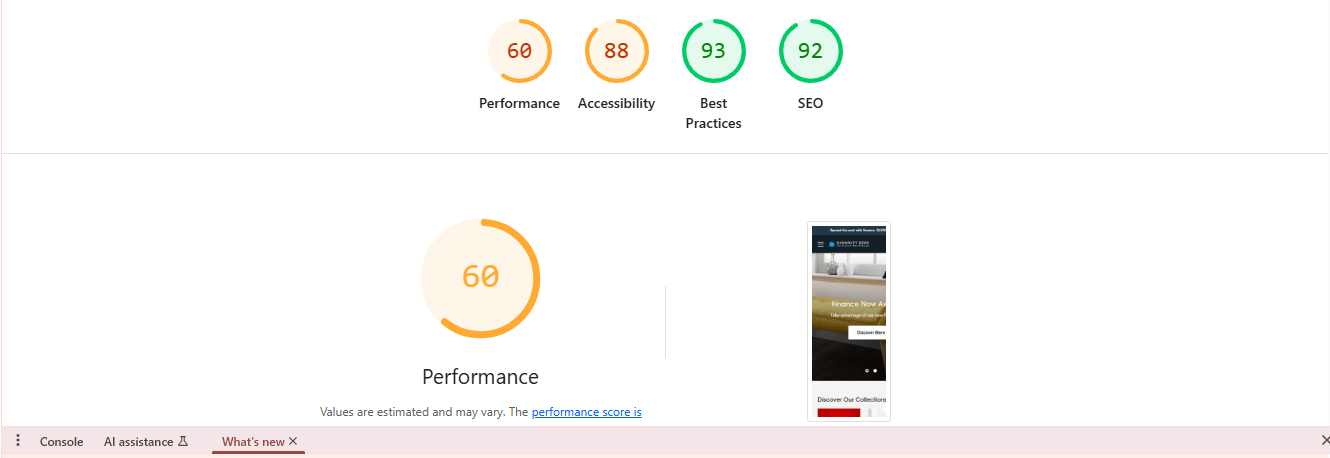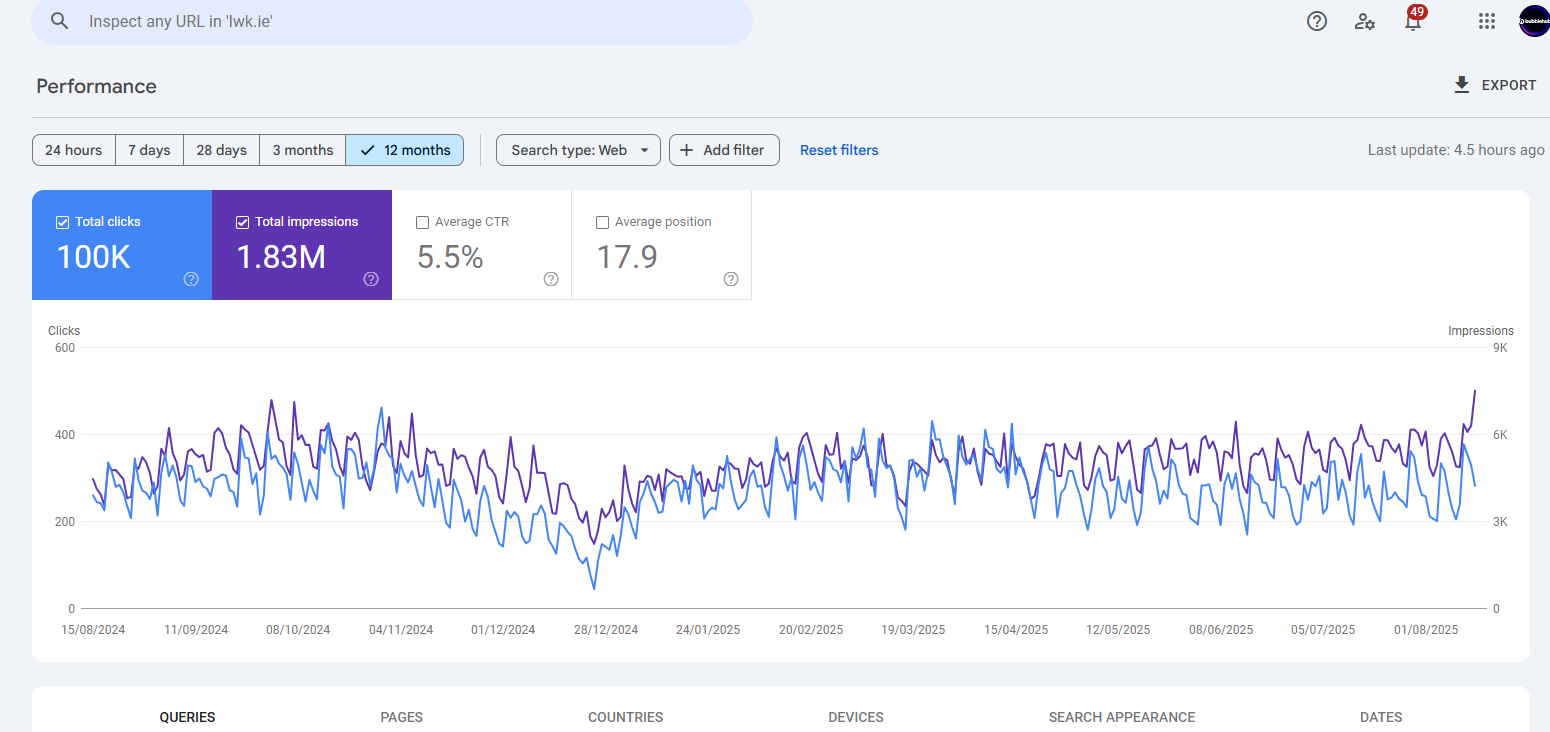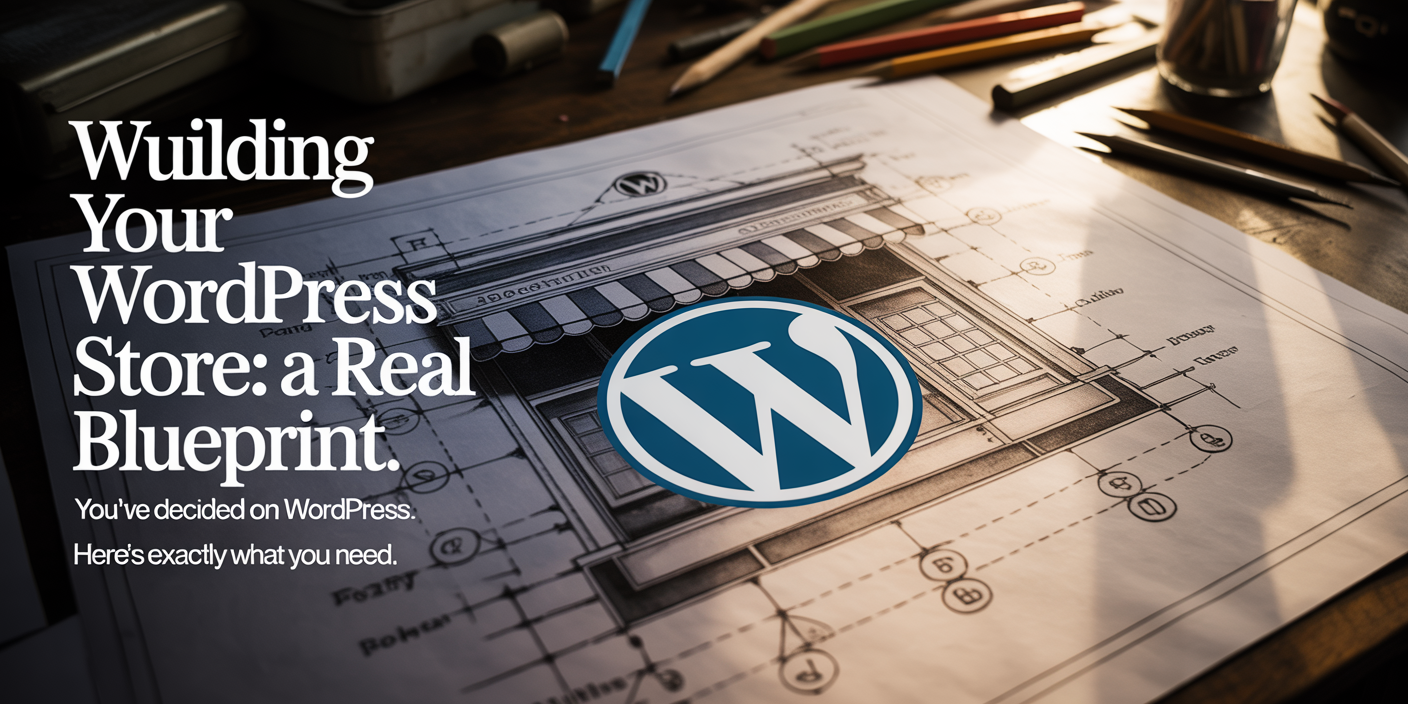The Complete Truth Nobody Tells You
You want to sell online. You need answers, not marketing fluff.
Everyone says something different about WordPress for e-commerce. Your developer friend loves it. Your business coach suggests Shopify. Facebook groups argue endlessly. Who's right?
I've built over 500 online stores. Some on WordPress. Some on Shopify. Some on platforms that no longer exist. As the founder of Bubblehub Media, a digital marketing agency that's helped businesses across Ireland and the UK grow online for over a decade, I've seen firsthand what makes ecommerce stores thrive — and what makes them fail. Let me tell you what actually matters for your business.
The Quick Truth - Is WordPress good for ecommerce ?
Yes, it is. WordPress runs millions of successful online stores. According to BuiltWith's 2025 data, WooCommerce alone powers 25% of the top one million ecommerce sites globally. These businesses aren't stupid. They chose WordPress for specific reasons.
But WordPress isn't automatically the right choice for you.
Think of it this way. WordPress is like buying a house. You own everything. You control everything. You fix everything. You can renovate however you want. Nobody can evict you. Nobody takes a percentage of what happens inside.
Shopify? That's like renting a luxury apartment. Someone else handles maintenance. The amenities work perfectly. You pay monthly rent forever. You can't knock down walls. The landlord takes a cut of your business. But you sleep well knowing problems aren't yours to fix.
Both work. Both make money. The question is which fits your situation better.

Why Sarah Switched (And Why Tom Didn't)
Sarah makes handcrafted jewellery. She started on Etsy, built an audience, then wanted her own store. Shopify seemed perfect. Easy setup. Professional themes. Quick launch.
The monthly costs started reasonably. Basic Shopify cost €39. She could handle that.
Then reality hit. Shopify’s built-in reviews weren’t enough. She needed Judge.me for proper review collection. Add €15 monthly. She needed email popups to build her list. Privy worked well. Another €20 monthly. Her products were hard to find. She added better search functionality. €20 more each month. The default abandoned cart emails weren't converting. She upgraded to a better system for €29 monthly.
She wanted to create gift sets by bundling products. That required an app. €30 monthly. Her Instagram posts needed to show in her store for social proof. €15 monthly. When popular items sold out, customers wanted notifications. Back in stock alerts cost another €20 monthly.
Six months after launching, Sarah was paying €178 every month. Before processing fees. Before transaction fees. Before the extra 2% Shopify charged because she used PayPal instead of Shopify Payments.
She did the math. Her profit margins couldn't sustain these costs. She moved to WordPress.
Today, Sarah pays €35 monthly. Her hosting costs €20. Her premium theme was a one-time €60 purchase. The plugins she needs? Most are free. The few premium ones cost less than €200 yearly. She has better SEO control. Her content marketing actually works. Sales are up 40% while costs dropped 80%.
But Tom tells a different story.
Tom sells workout supplements. He tried WordPress first because it was "free." He spent three weeks trying to make his store look professional. Nothing worked quite right. Every plugin update terrified him. Would it break his checkout? Would customers see errors? He lost sleep over security for his WordPress site. He spent more time on technical issues than on selling.
Tom switched to Shopify. Within two days, his store looked better than his WordPress attempt ever did. Everything just worked. The monthly cost? Worth every penny for his peace of mind. He focuses on marketing and sales now, not technical problems. His revenue doubled in six months because he stopped fighting his platform.
Sarah and Tom both made the right choice. For them. For their skills. For their business models.
The question isn't whether WordPress is good for e-commerce. It's whether WordPress is good for YOUR ecommerce.
What "WordPress Ecommerce" Actually Means

WordPress by itself doesn't sell products. It needs help.
WooCommerce is that help for most stores. This free plugin transforms WordPress into a complete selling machine. Physical products with inventory tracking. Digital downloads with automatic delivery. Subscriptions with recurring billing. Bookings for appointments or rentals. Variable products with size and colour options. Grouped products for kits and bundles. External products for affiliate sales.
WooCommerce handles it all. For free. No monthly fees. No transaction percentages. Just the plugin doing its job.
But you have options. Easy Digital Downloads focuses purely on digital products. It's cleaner and faster if you only sell downloads. No physical product features cluttering things up. Perfect for software, ebooks, music, courses, photography, and digital art.
MemberPress specialises in membership sites. Recurring subscriptions. Protected content. Drip feeding courses. Community access. It's built for subscription businesses from the ground up.
WP Simple Pay just adds payment buttons. No cart. No product catalog. Just "click here to pay." Perfect for services, consultations, or simple sales on an ecommerce platform.
You choose what fits. You're not forced into one system that sort of works for everything. You get exactly what your business needs.
The Real Cost Comparison (With Actual Numbers)
Money matters. Let's compare real costs, not marketing promises.
Using WordPress for ecommerce: The Complete Investment
WordPress software costs nothing. But running a professional store requires investment.
Hosting forms your foundation. Good hosting runs €20 to €50 monthly. Cheap €3 hosting will destroy everything else you build. Don't go cheap here. Your domain name costs €15 yearly. SSL certificates usually come free with decent hosting.
Themes range from free to €200. Most good ones cost €60 to €100 as a one-time purchase. You buy once, use forever. No recurring theme fees.
Plugins vary wildly. WooCommerce itself is free. Many essential plugins cost nothing. Premium plugins might cost €50 to €200 yearly each. Most stores need two or three premium plugins maximum.
Email marketing starts free with most providers. As your list grows, expect €20 to €50 monthly for decent email tools. Backup services run €10 monthly unless your host includes them. CDN for global speed adds €20 monthly if needed.
A realistic WordPress store costs €300 to €800 the first year. After that? Maybe €400 yearly plus hosting. Most stores run profitably at €40 to €70 monthly all-in.
Is Shopify Expensive? Shopify starts simple. But Ads up Quickly.
Then you build your store. You need features. Each feature is an app. Each app has a monthly fee.
I tracked twenty real Shopify stores last month. Here's what they actually pay.
A clothing boutique on the Basic plan pays €39 for Shopify. Plus €15 for reviews. Plus €20 for email pop-ups. Plus €29 for good abandoned cart recovery. Plus €15 for Instagram integration. Plus €10 for wishlists. Plus €20 for size charts. Plus €15 for better search. Plus €10 for currency conversion. Total: €173 monthly.
A home goods store on the Shopify plan shells out €105 base. Reviews cost them €49 for a professional solution. Email marketing runs €45. SEO tools add €30. Product customisation is €50. Loyalty program costs €59. Advanced search runs €35. Shipping calculator adds €20. Back in stock alerts cost €15. Total: €408 monthly.
A supplements company on Advanced pays €399 to start. Their review system costs €199 for enterprise features. Email automation runs €150. SEO suite is €99. Subscription management costs €99. Loyalty and referrals together run €199. Professional search adds €99. Various other apps total €250. Monthly total: €1,494.
These aren't edge cases. This is a normal Shopify reality. The platform is easy to use because it's basic. Every enhancement costs extra. Forever.
Don't forget transaction fees. Not using Shopify Payments? Add 0.5% to 2% extra on every sale. Selling internationally? Currency conversion fees. Using local payment methods? More fees.
The €39 advertised price is like a car's base price. Nobody actually pays just that.
SEO: The WordPress Advantage Nobody Discusses
Google sends free traffic. Free traffic makes sales. WordPress dominates SEO for specific reasons.
URL Structure Can Make or Break SEO
Why This Matters
- Clean URLs get clicked 25% more often in search results (Backlinko study)
- They rank higher for competitive keywords
- They build trust with customers who notice details
Real-World Example
Content and Commerce Integration
WordPress started as a publishing platform. This foundation creates massive advantages for e-commerce.
Your competitors have product pages. You have product pages plus buying guides that rank for research terms. Comparison articles that capture "versus" searches. Category descriptions that actually help customers and Google. Blog posts that naturally mention products with embedded buy buttons. Resource libraries that establish authority. FAQ sections that win featured snippets.
A camping gear client built their strategy around this integration. Their product pages convert well. But their "Winter Camping Complete Guide" brings 15,000 visitors monthly. The guide naturally mentions products. Readers trust the recommendations. Sales follow. Their Shopify competitors can't match this integration. Their blogs feel separate from their stores.
Shopify includes a blog feature. It works. But asking Shopify's blog to compete with WordPress is like asking a casual jogger to race an Olympic sprinter. Both can run. One was built to win.
Pros of using Wordpress - Technical SEO Control
WordPress with proper plugins gives you complete control over meta titles and descriptions, canonical URLs for duplicate content, robot directives for crawling, XML sitemaps with priority settings, schema markup for rich snippets, breadcrumb navigation, internal linking automation, and redirect management.
Every element that affects rankings sits under your control. You can test, adjust, and optimise everything.
Shopify gives you basic SEO features. Title tags. Meta descriptions. Some automatic technical SEO. Want more? Install an app. Pay monthly. Still get less control than free WordPress SEO plugins provide.
Checkout: Where Money Actually Changes Hands

Your checkout process determines conversion rates. Small improvements make big differences.
WordPress lets you control every element of checkout. Remove unnecessary fields that cause abandonment. Add custom fields for gift messages or special instructions. Create different checkout flows for different customer types. Show or hide fields based on previous selections. Add progress indicators that reduce anxiety. Include trust badges exactly where they're most effective. Implement one-click upsells after purchase. Create order bumps for related products. Design mobile-specific checkout experiences.
A cosmetics client redesigned their WordPress checkout. They removed three fields. Added a progress bar. Included an order bump for a makeup bag. Results? Checkout completion increased 22%. Average order value rose 18%. These weren't major changes. Just optimisations WordPress made possible.
Shopify limits checkout customisation severely on standard plans. You can change colours. Add your logo. Modify some text. Maybe add a custom field through apps. But restructuring the checkout? Changing the flow? Deep customisation? You need Shopify Plus at €2,300+ monthly minimum.
Shopify's checkout works well for most stores. But "most" isn't "all." If your business needs something specific, WordPress delivers, while Shopify says no.
Payment Processing: Who Gets Your Money?
Every sale involves payment processing fees. How much extra you pay depends on your platform choice.
WordPress connects directly to payment gateways. Stripe charges their standard 2.9% plus 30 cents. PayPal charges their rates. Square, Authorize.net, or any other processor charges their published rates. WordPress takes nothing extra. Zero platform fees on transactions.
Want to accept cryptocurrency? Install a free plugin. Connect your wallet. Pay only network fees. Want local payment methods for specific countries? Usually, free or one-time purchase plugins. WordPress doesn't insert itself between you and your money.
Shopify operates differently. Using Shopify Payments? You pay rates similar to Stripe. Clean and simple. Using ANY other payment processor? Shopify adds extra transaction fees. Basic plan adds 2%. Shopify plan adds 1%. Advanced adds 0.5%.
These percentages seem small until you do the math. Process €30,000 monthly through PayPal on Basic plan? That's €600 extra to Shopify. Every month. For payments they don't process. Just platform tax.
Some businesses can't use Shopify Payments due to product types or location. They're forced to pay these extra fees with no alternative except switching platforms.
International Selling Without the Markup

Selling globally means handling currencies, taxes, shipping, and regulations. Both platforms can do it. The costs differ dramatically.
WordPress handles international selling through plugins and direct integrations. Display prices in unlimited currencies. Use real-time exchange rates or set custom rates. Add currency switchers anywhere on your site. Detect visitor's location and show their currency automatically. No platform fees for any of this.
EU tax compliance matters for European sales. WordPress plugins handle VAT validation, automatic tax calculation, invoice generation, and OSS reporting. A good EU VAT plugin costs €50 to €100 yearly. Compare that to hiring an accountant or paying platform fees.
International shipping through WordPress offers complete flexibility. Create shipping zones by country, state, or postal code. Set different rates for different regions. Offer free shipping thresholds that make sense for your margins. Show real-time carrier rates. Let customers choose delivery speeds. Configure everything exactly as needed.
Shopify Markets promises easy international selling. Automatic currency conversion. Local payment methods. Duty and tax calculation. International domains. It delivers these features but charges for the convenience. Currency conversion fees run 1.5% to 2%. Payment method fees vary. The complexity adds up quickly. Those checkout limitations? They apply globally.
Speed and Performance: Seconds Cost Sales

Amazon found that every 100 milliseconds of latency cost them 1% in sales (Amazon Web Services case study, 2024). Your store isn't Amazon, but speed still directly impacts revenue.
WordPress speed depends entirely on your choices. Choose quality hosting at €20+ monthly, not €3 bargain hosting that cripples everything. Use a lightweight theme focused on speed, not a bloated "everything" theme. Optimise images before uploading or use a plugin that does it automatically. Install caching to avoid rebuilding pages repeatedly. Add a CDN if selling globally. Maintain your database regularly.
Follow these basics and your WordPress store loads in one to two seconds. Google rewards fast sites with better rankings. Customers don't abandon slow checkouts. Sales increase.
The speed killers are predictable and fixable. Cheap hosting ruins everything else. Too many plugins create overhead. Huge images waste bandwidth. Missing caching makes every visit slow. But fix these issues and WordPress flies.
Shopify manages infrastructure for you. They handle servers, CDN, basic caching, and some optimisation. Your store will be reasonably fast without effort. But you can't optimise beyond what they provide. You can't configure servers for your specific needs. You can't implement advanced caching strategies. You can't control how apps impact performance.
Each Shopify app adds code to your store. Code requires processing. Processing takes time. Five apps might not matter. Fifteen apps slow things noticeably. Twenty-five apps? Significant impact. But you need those apps for features. It's a trap with no escape.
Security: The Truth About Safety
Both platforms can be secure. Both can be hacked. The difference is responsibility and control.
WordPress security requires basic maintenance from you. Update WordPress monthly when prompted. Update plugins when notifications appear. Use strong passwords via a password manager. Install a security plugin like Wordfence or Sucuri. Choose reputable hosting with security features. Set up automated backups.
Do these six things and your WordPress store is secure. Skip them and problems await. The choice is yours.
This isn't complicated or time-consuming. Updates take minutes. Security plugins run automatically. Backups happen without intervention. Good hosting includes many security features. Total time investment? Maybe an hour monthly.
Shopify handles security for you. They manage PCI compliance, SSL certificates, updates, fraud protection, and backups for the e-commerce website. You don't think about it. But when issues arise, you're helpless. You submit support tickets. You wait for fixes. You lose sales during downtime. You have no control.
Both platforms face threats. WordPress's popularity makes it a target, like Windows vs. Mac. Shopify's centralisation makes it attractive for different attacks. Neither is immune. The question is how you prefer to handle security. DIY with control or managed without options.
Real Client Success: The Organic Food Store Migration
One of our verified success stories at Bubblehub Media involves an organic food retailer based in Dublin. They came to us in early 2023 frustrated with rising Shopify costs.
Their Shopify setup was costing €385 monthly between the base plan and twelve essential apps. We migrated them to WordPress with WooCommerce in March 2023. Here's what happened:
Month 1-3 Results:
- Platform costs dropped from €385 to €65 monthly
- Organic traffic increased 38% through better URL structure and content integration
- Checkout completion rate improved 19% with a customised flow
- Average order value rose €12 through strategic order bumps
The key? We could implement features they needed without monthly app fees. Custom wholesale pricing for B2B customers. Advanced shipping rules for fresh products. Integration with their local POS system. All built once, no recurring costs.

Their profit margins improved 22% in the first quarter post-migration. Not from selling more initially, but from keeping more of what they sold. The saved money went into Google Ads and content creation, which drove further growth.
Real People, Real Results
Let me share what happened to actual store owners after choosing their platforms.
Marcus sold electronics through dropshipping. He started on Shopify because the setup seemed easier. After a year, he was paying €450 monthly in app fees for features he needed. He switched to WordPress. The same features now cost him €50 monthly. The saved €400 goes into advertising. Revenue increased 60% with better margins.
Jennifer handcrafts jewellery with unique stories behind each piece. Her blog brings 70% of her traffic through content about her creative process, gemstone meanings, and jewellery care. WordPress lets her blend content and commerce seamlessly. Each blog post naturally leads to products. Her email list of 10,000 engaged subscribers came from content upgrades. Platform cost? €35 monthly total.
But not everyone needs a WordPress site for their ecommerce needs.. Carol from Hana Lee Studios proves Shopify can be the perfect choice for the right business.
Carol had been selling personalised gifts and accessories for weddings, new babies, and children through Facebook and Instagram. When she outgrew social selling, she needed a proper website that could handle her complex product setup. Every single item is customised for the buyer. Names, dates, colours, special messages, each order is unique.
She reached out to us at Bubblehub Media for help. We analysed her needs and recommended Shopify.
Why? Her business model needed rock-solid order management more than SEO flexibility. She needed simplicity for managing hundreds of personalisation options more than checkout customisation. She needed reliable support more than cost savings.
We built her a Shopify store that handles the complexity beautifully. Customers can preview their personalised items before ordering. The checkout process guides them through options without confusion. Integration with her production workflow saves hours daily.
The results speak for themselves. In just the first year, sales increased by 720%. Not a typo. Seven hundred and twenty per cent.
Carol says the ongoing support matters as much as the site itself. She knows we're always there to manage SEO, run Google Ads, and solve any issues that arise. For her, Shopify isn't just a platform. It's the foundation of a business that runs smoothly, scales easily, and keeps customers delighted.
Each person chose correctly for their situation. Carol's 720% growth on Shopify proves the platform can deliver exceptional results when matched to the right business model. Marcus's 60% revenue increase after switching to WordPress shows the value of lower costs and better margins for different needs.
Platform success depends on alignment with business needs, not platform features in isolation.
Building Your WordPress Store: A Real Blueprint
You've decided on WordPress. Here's exactly what you need.
Start with hosting. SiteGround's StartUp plan at €18 monthly handles 10,000 visits. Includes SSL, daily backups, and email. Perfect for beginning. When you grow, upgrade to GrowBig at €30 monthly for 25,000 visits and a staging environment.
Install WordPress. Takes five minutes with SiteGround's installer. Add WooCommerce. Another five minutes. Choose the Astra theme. It's free, fast, and WooCommerce-optimised. Use their starter templates to look professional immediately.
For payments, connect Stripe directly. Standard rates, no platform markup. Add PayPal as a secondary option. Both integrate free with WooCommerce.
Essential plugins to install immediately include Wordfence for security (free version works great), UpdraftPlus for backups beyond hosting backups, Yoast SEO for search optimisation, and WP Rocket for speed if budget allows (€49 yearly).
Start with this basic setup. Add features as you need them. Don't install twenty plugins on day one. Build gradually. Test everything. Keep it simple initially.
Total monthly cost for a professional starter store? About €40. That includes hosting, domain, and a couple of premium plugins. No surprise fees. No growing app bills. Just predictable costs you control.

The Ecommerce platform Migration Reality
Already using another platform? Switching requires planning.
Moving from Shopify to WordPress preserves your products, customers, and basic content. But URLs need extensive redirects to maintain SEO. Themes must be recreated. Apps need replacement with plugins or custom code. Checkout requires rebuilding. Email automation needs a fresh setup.
Expect two to four weeks for migration. Budget €2,500 to €15,000 depending on store complexity. The biggest challenges involve maintaining SEO rankings, migrating customer passwords, preserving order history, continuing subscriptions, and transferring reviews.
Moving from WordPress to Shopify is simpler for basic elements but you lose customisation, advanced features, and URL flexibility. Timeline is typically one to two weeks. Costs run €1000 to €5,000.
Only migrate if long-term benefits significantly outweigh transition costs and risks. Sometimes staying put and optimising makes more sense than switching.
Making Your Decision
The choice between WordPress and Shopify isn't about good or bad. It's about fit.
Choose WordPress if you want lower long-term costs, complete customisation control, superior SEO capabilities, content marketing integration, and freedom from platform restrictions. You'll need basic technical willingness, patience for initial setup, and comfort with responsibility.
Choose Shopify if you value immediate setup, managed infrastructure, zero technical requirements, and predictable simplicity. You'll pay more monthly, accept platform limitations, and work within their system.
Both platforms power successful stores. Both have strengths and weaknesses. Neither is perfect for everyone.
The key is matching platform characteristics to your business reality. Not your hopes. Not your fears. Your actual situation right now.
Build An Ecommerce Tite Today, Not Tomorrow
Perfect timing doesn't exist. Perfect platforms don't exist. But perfect procrastination definitely exists, and it kills more stores than platform choice ever will.
Pick one. WordPress or Shopify. Start building. You'll learn more in one week of actual building than in months of research. You can always adjust, optimise, or even switch platforms later. But you can't recover time spent hesitating.
Your first sale is waiting. Your customers are searching. Your competitors are selling.
Stop researching. Start building. The platform matters less than taking action.
WordPress or Shopify? The real answer is whichever one you'll actually use today. Not tomorrow. Not next week. Today.
Your successful store begins with that choice. Make it now.
Need Help Deciding Between WordPress and Shopify?
Book a free 30-minute consultation with our team at Bubblehub Media and get a personalised platform strategy for your store. We'll analyse your specific needs, technical capabilities, and growth goals to recommend the right solution. No sales pressure, just honest advice based on building hundreds of successful stores.







